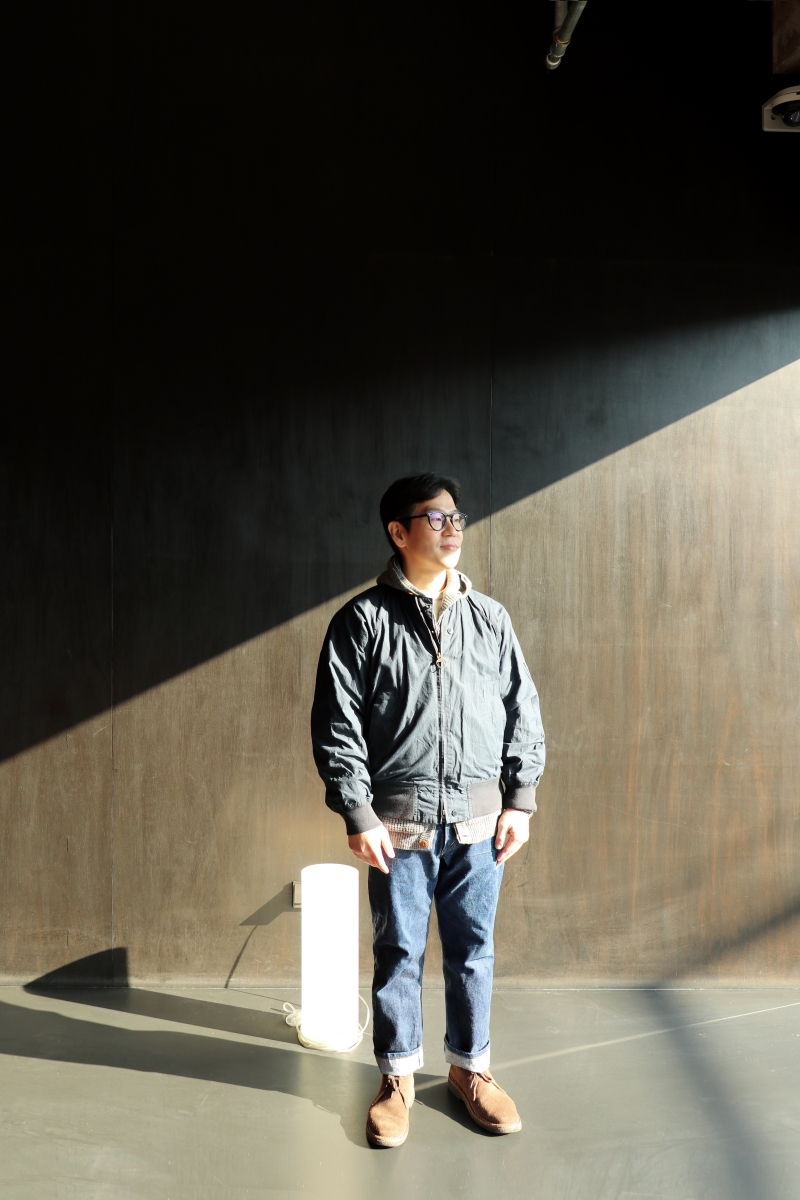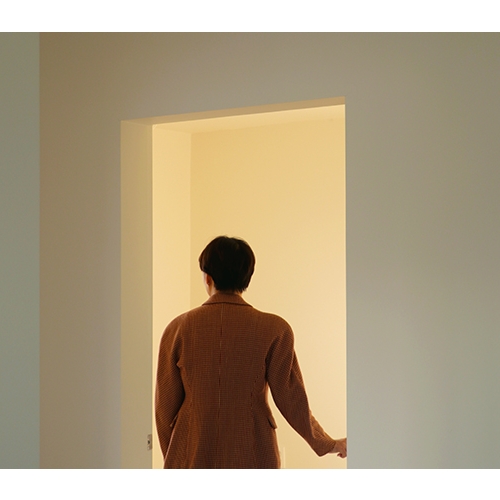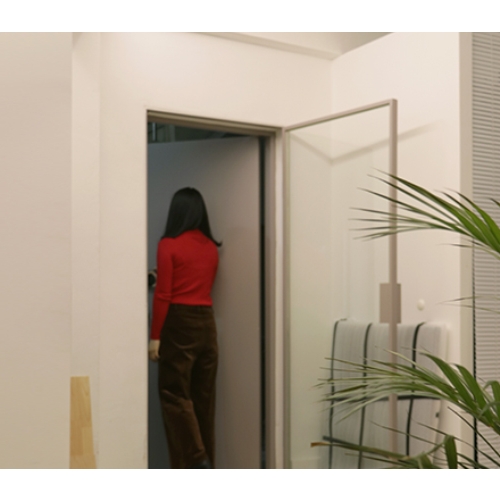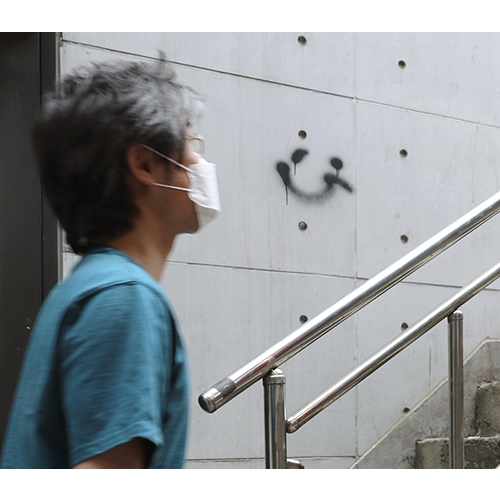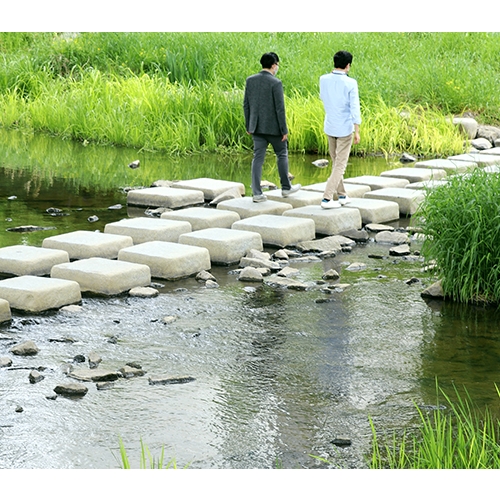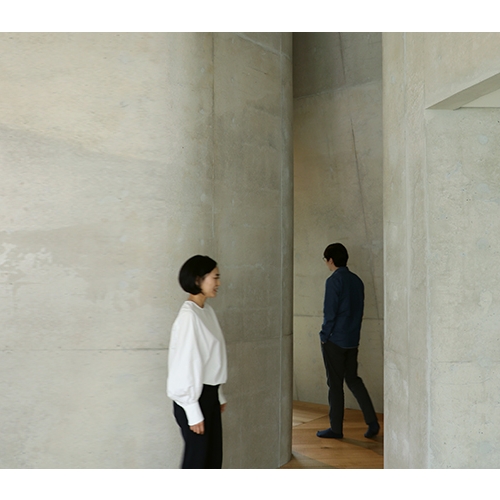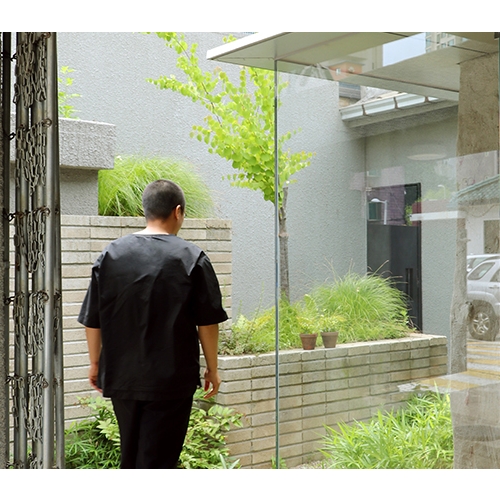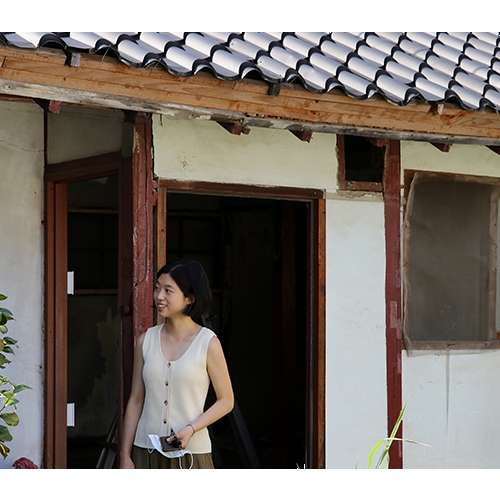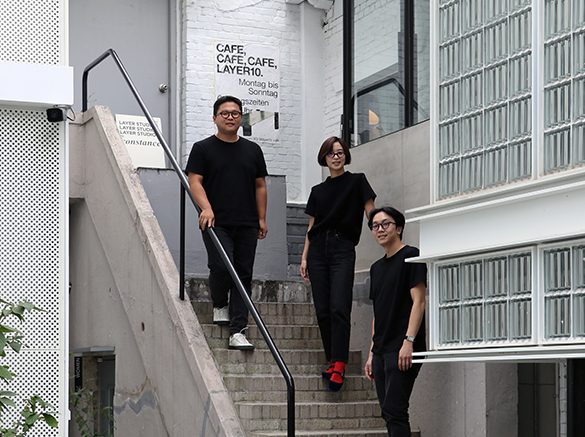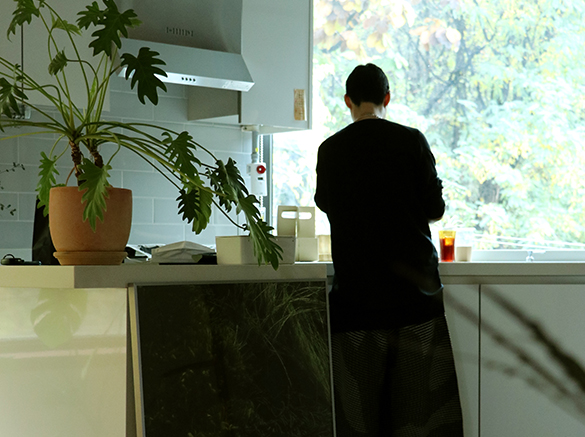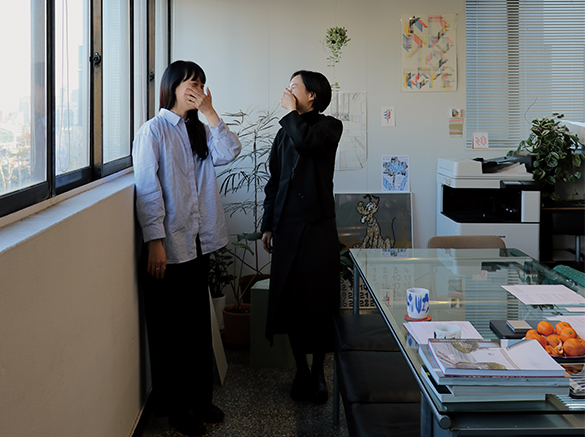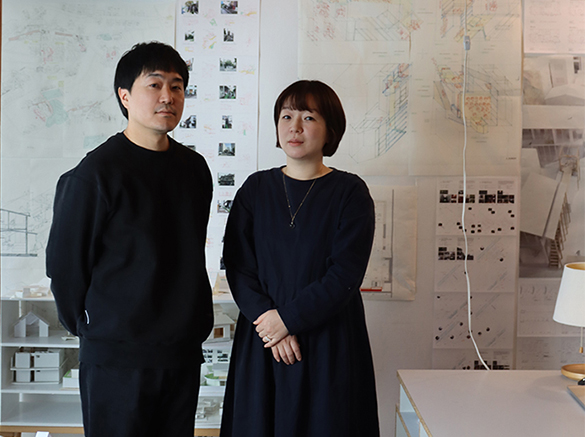ʻI am an Architectʼ was planned to meet young architects who seek their own architecture in a variety of materials and methods. What do they like, explore, and worry about? SPACE is going to discover individual characteristics of them rather than group them into a single category. The relay interview continues when the architect who participated in the conversation calls another architect in the next turn.
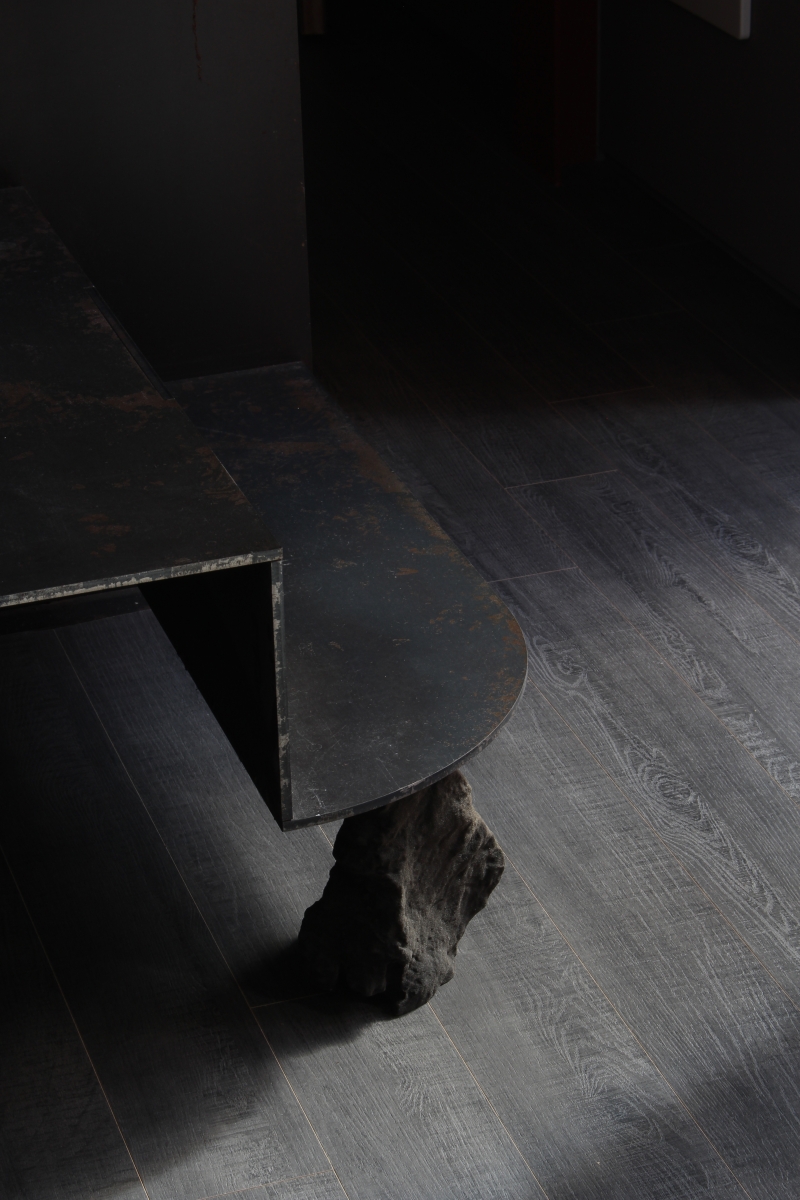
Kind of Stone ⓒKim Sejun
interview Hwang Dongwook × Choi Eunhwa
It Divides into Two
Choi Eunhwa (Choi): Your work occupies a broad spectrum in terms of fields and forms. The fields encompass architecture, technology, and art, and the forms are diverse, from space-based work to virtual images, videos, and research. I’m curious about how you embarked on your practice.
Hwang Dongwook (Hwang): In 2016, I began a one-person office called ʻBuilding Laboratory Architectureʼ. The goal is to perform a kind of experimental architecture, even if it produces works that are not necessarily built. Then, in 2017, I participated in the Seoul Biennale of Architecture and Urbanism (SBAU) as part of a group called ʻTech Capsuleʼ. Hwang Jieun (professor, University of Seoul), Jeon Piljoon (principal, Studio LXJX), media artist Hyun Park, and robot arm solution company BAT Partners all joined forces. It began as a company in 2018 under the same name, and it was an in-house venture-like organisation at the University of Seoul. I belonged to Tech Capsule until December 2021 and then I left. Somehow, I more often work on art not architecture. I think the SBAU was an opportunity. I started making things and have experimented with digital fabrication technology in earnest from that point on.
Choi: SBAU was a turning point. What project did you work on at that time?
Hwang: Itʼs a project called (Un)Natural Tiles. When soil is exposed to the air, the surface cracks in a Voronoi pattern, and we worked to make that pattern into a robot arm. BAT Partners developed a system that shoots mud through 3D printing using a robotics arm, and I made a hypothesis using this system, along the lines of ʻthis type of soil wil produce such and such patterns if it was stacked in a specific directionʼ. When working with technology, people try to demonstrate how advanced the technology is in many cases. Instead, I was more interested in the imbalance between the precision of technology and more natural outcomes. Therefore, I made tiles out of soil. When looking at their natural appearance, you donʼt think of robotics arms or digital applications. I hoped there would be a point where people would think, ʻI seeʼ or ʻIt could beʼ after understanding the production process.
Choi: Do you work by following a traditional architecture—a project with a client and a design considering certain requirements and constraints and a building space through drawn plans?
Hwang: Of course. Thereʼs a interior project in progress, but it doesnʼt incorporate 3D printing or digital fabrication technology that I often use because of various practical problems. In any new design attempt, including the technologies I use, there is a point when artwork allows for more freedom than architectural work. Architecture is not just easy because it cannot be separated from problems such as functions and budgets. So, I have separated out construction work and artwork. Iʼm working on these at the same time.
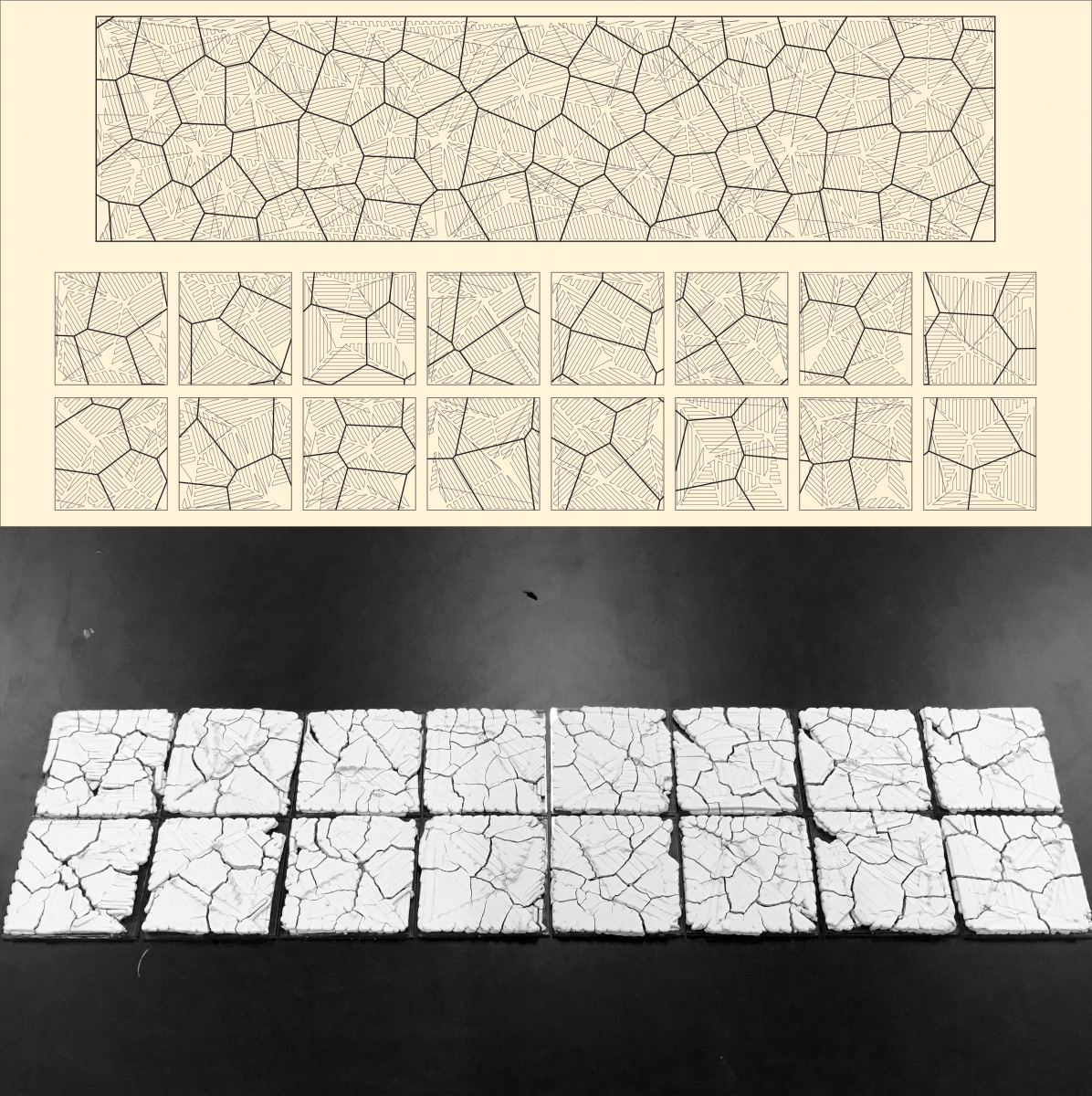
(Un)Natural Tiles ⓒHwang Dongwook
Take a Closer Look at Different Points
Choi: I found evidence of many stones on your Instagram, such as those from René Magritte’s paintings, those picked up along the road, and those featured in artworks. What is it about stones?
Hwang: The beginning was with 3D scanning rather than with stones. Itʼs a technology that informationises things in three dimensions, and I wanted to use it, which is commonly used where measurement is needed. I wondered how detailed the texture would be if I scanned a stone. It began with a straightforward idea.
Choi: Since when?
Hwang: There was a support project under the theme of ʻArt and Techʼ at the Arts Council Korea (ARKO). I submitted a work plan entitled 21st Century Scholar’s Stone. The idea was to view stones and statues of Confucian officials in the 21st century. I began with a simple idea, but the process was more interesting than I expected, so I think Iʼve become more and more seriously about stone. I went around Seoraksan Mountain, Gapado Island, and Yangpyeong to find stones and collect them one by one. Stones are common, but they are all unique when you pick up each one and nothing is the same. There are a lot of stones piled up in my office right now. (laugh)
Choi: You collaborate a lot with other artists and architects using the technology of scanning and printing stones. You worked on the realisation of Michael Joo’s sculpture, Absentialis, in 2018. How did the collaboration go?
Hwang: Joo wanted to create a superimposed sculpture by combining seven natural volcanic stones collected in the Cheorwon area. At first, the artist found a company that produces sculptures using Styrofoam rocks or Fiber Reinforced. Then he commissioned Tech Capsule. We suggest with an architectʼs mind that if we are going to make artificial stones, we make them out of concrete. Then we got to work together. The artist wanted all seven stones to have different colours and patterns. So we make and show the way and shape of stones combined in three dimensions and produced the design with the final decision.
Choi: Recently, you have worked with KIND ARCHITECTURE and KHYarchitects, respectively.
Hwang: Gratefully, both architects visited my exhibition. Kim Woosang (co-principal, KIND ARCHITECTURE) recently was working on a space, he suggested that it would be good to have some connections with my work. He only pointed out the location in detail when he wanted something to go under the iron stairs. While designing in 3D, based on the given situation, I looked at the stones that I had scanned in the past on a computer monitor and thought, ʻIs this stone suitable for this?ʼ or ʻIs this one good or bad?ʼ My conclusion is that the greater the contrast, the more room for exciting things to happen. Under the artificial stairs made of steel plates, a stone looks like it was just picked up from somewhere in terms of shape and size. When someone asks about stones, I thought it would be more interesting to be able to say, ʻActually, this is a 3D printed stone, not something I picked upʼ. Of course, it doesnʼt matter if they donʼt know. (laugh) Kim Hyoyoung (principal, KHYarchitects) said they wanted to create a thrilling situation like a rock falling on the roof. But itʼs too dangerous to make it with a natural stone, so we made it with artificial stone. I put the H-beam structure inside the rock not to be exposed from the outside and fixed it to the building.
Choi: How are these three connected; the stones collected from nature, the information gathered from the 3D scanned stones, and the stones you designed?
Hwang: Three stones are connected each other for me. New stones come out through informatization and information reconstruction. I cut and trim some parts if necessary and combine different stones together depending on structural problems or the nature of a project. For example, I mix part of a stone Iʼve picked up from the beach with a rock from the mountain. Most of the materials used for printing are sand. Sometimes I use plastic to make interior decorations.
Choi: I think we can talk about stones all day long. (laugh) It’s been about four years since you dealt with stones. Have there been any changes from the first time?
Hwang: Iʼm starting to think more and more of forming a stone that does not exist as a physical object, not as a real stone. My hope is to create a new object through received information, but it doesnʼt need to be a physical outcome. As such, I am also working on images and videos that feature stones. It will be an interesting crux point to consider how we look at a stone. Itʼs hard to say that it doesnʼt exist because itʼs a stone I create based on the record of an object that actually exists elsewhere. It is also in an ambiguous state that cannot be said to exist.
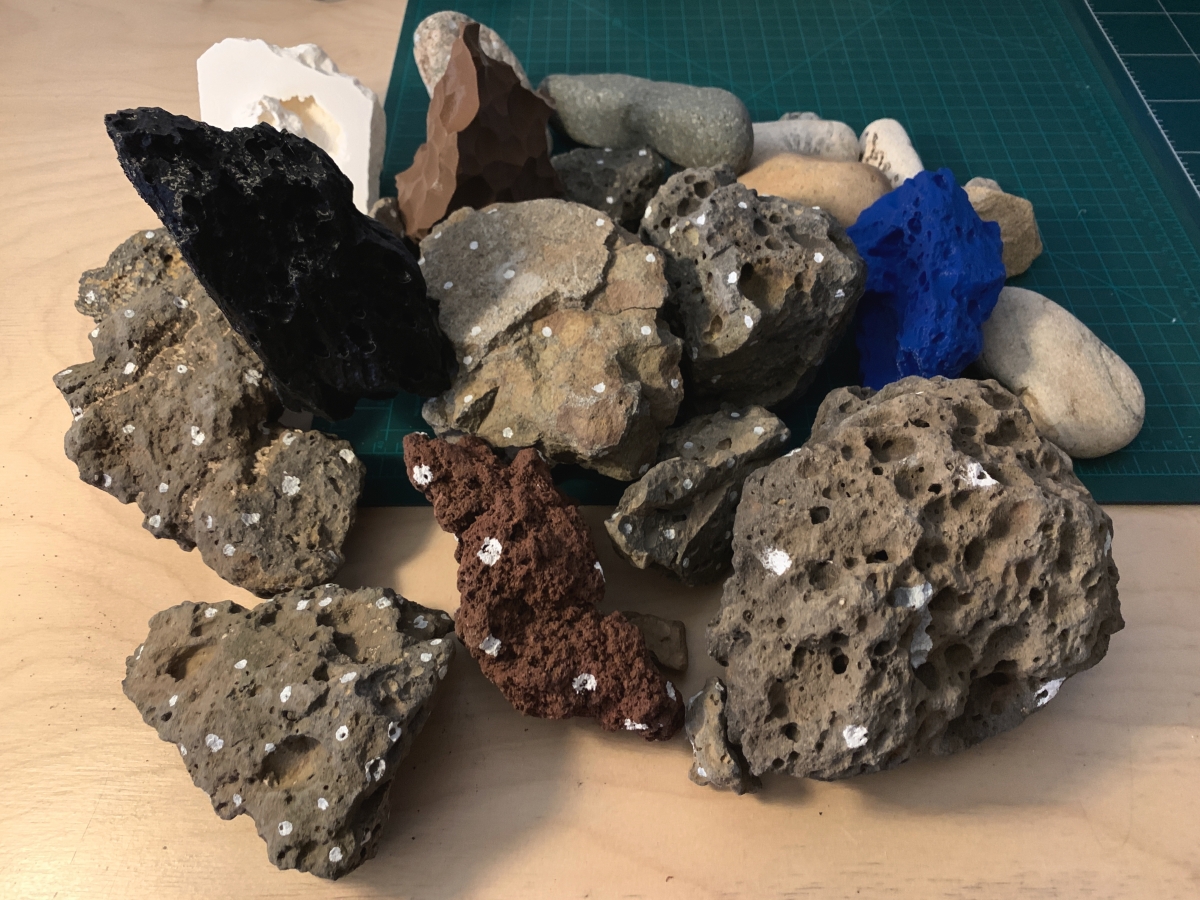
Natural stones for 3D scanning and printed stones ⓒHwang Dongwook
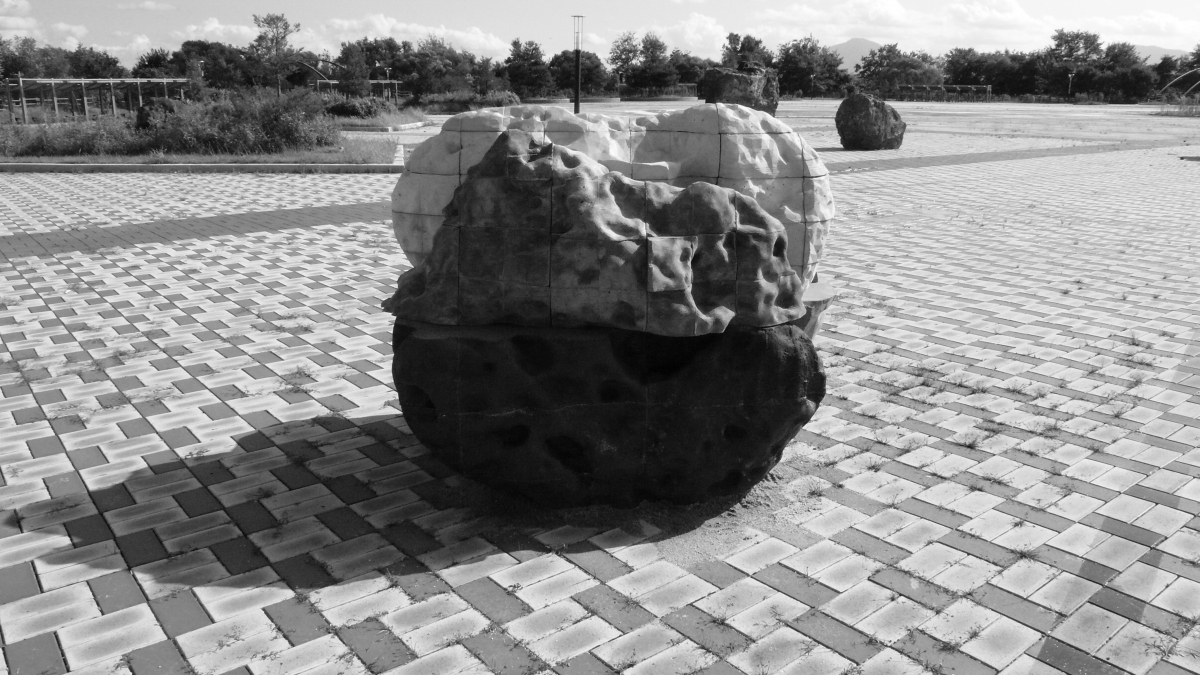
Absentialis ⓒHwang Dongwook
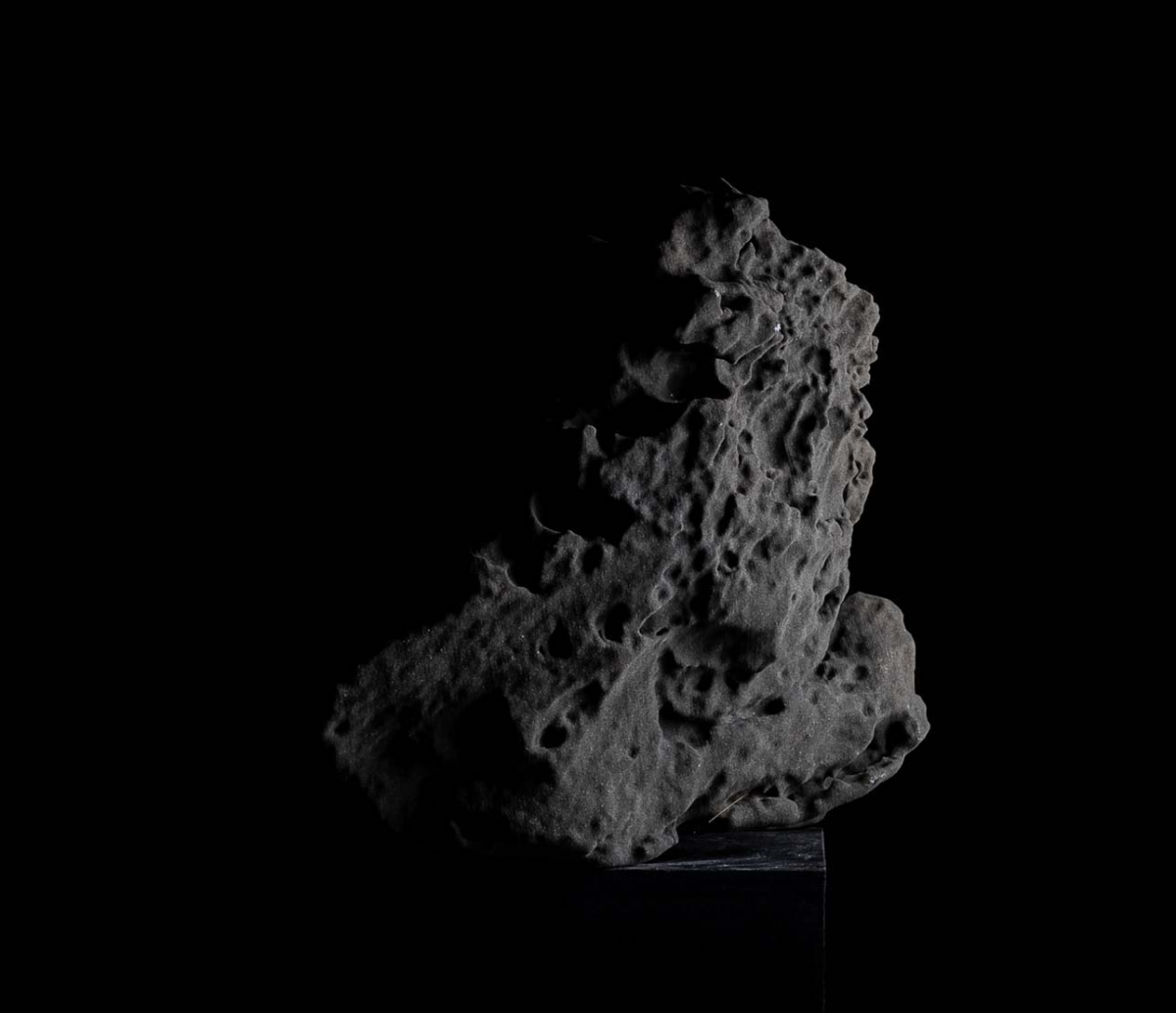
21st Century Scholar’s Stone ⓒLee Taxu
Facing an Unreal but Clear Order
Choi: What about when you teach students? After graduating from undergraduate and graduate school in the United States, you have taught in Korea since 2011. There is a difference between the courses you have studied and the courses you teach.
Hwang: What I experienced in the United States was that students trialled their knowledge and then the professor checks their working. Instead, in Korea, there is an attitude of ʻLetʼs do it well from the beginning because we have to step off on the right footʼ. I wanted to proceed in the manner in which I was taught, kind of laissez-faire. (laugh) Then, a very interesting moment arises. I found it interesting to witness that moment at which students decide what to do, determine whether it their attempts went well or not, and express their opinions to the professor. I try to do the same for my students. At least, I think I do, but I canʼt confidently say whether the students feel this way. (laugh)
Choi: Of your classes, there is a lecture with the title ‘Digital Media’ but which explores new modern decoration and strange details from Carlo Scarpa to Euljiro. I guess this class is not just one in which to learn new skills?
Hwang: These days, it has become commonplace to design a space through 3D modelling and to make an architectural model using 3D printing. Even if I donʼt teach this technology to students, they may well already be used to it, and if not, they can address it later. So, I wondered whether it would be appropriate to talk about it all semester. In light of this, I combined the practice with the details of architectural design. Because, for me, contact points at which parts and elements meet each other look like they adopt a particular principle, as well as resulting from someoneʼs intentions and decisions. I thought that principles, intentions, and decisions were the basics behind every architect. So, I planned a class that would look at various details from examples by Scarpa to Euljiro to discover the aims and ambitions hidden behind them. As the students studied these details in depth, we entered into lengthy discussions. At the end of the semester, they designed as they would have done this if they were Scarpa and used 3D printing.
Choi: What is the opposite of the ‘digital’, in your opinion? Perhaps through opposite words, the digital that you think can be more concrete?
Hwang: I think the digital is connected to the virtual, but, of course, the digital is not virtual. Digital offers tangible information, but how that information is revealed is so often out of reach. I think the opposite of digital is ʻexistenceʼ. One more thing; the digital always has an order to it. Itʼs usually referred to as an algorithm. It sometimes looks random when itʼs too complicated, but itʼs so often hard to figure out and there is always an algorithm. So, I want to use ʻclose to disorderʼ as my second opposite. Thatʼs what I think right now, but I think that will probably change again in a decade.
Choi: What is the greatest difficulty you face in your work?
Hwang: To explain. For example, it is clear when you say ʻI do designʼ or ʻI am an artistʼ. But if you say, ʻIʼm designing, Iʼm going to try to use some of these techniquesʼ or, conversely, ʻIʼm going to create this kind of artwork, but Iʼm trying to do it from the perspective of an architectʼ, things start to get complicated. I wish I could get to a situation where no explanation is needed, but I think that is still a long way off. (laugh)
Hwang Dongwook, our interviewee, wants to be shared some stories from Oh Yeonjoo and Jeong Haewook (co-principals, Midday) in April 2022 issue.
